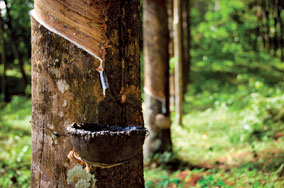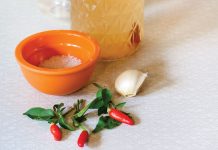Story by Jill Engledow

A century ago, Maui’s business leaders were excited about a new crop: rubber. It was all the buzz; surely rubber would bring prosperity to growers big and small. Soon thousands of young trees imported from Ceylon flourished on three plantations in rainy Nahiku.
Rubber promised a prosperous future because of the invention of the automobile. Wild trees in exotic jungles had previously provided enough rubber to meet the world’s needs. But with the sudden demand for automobile tires, entrepreneurs in tropical countries around the world rushed to establish rubber plantations, and Hawai‘i farmers were determined to lead the industry.
Rubber grew well in Nahiku. But the enterprise failed. Growers found that they could not compete on the worldwide market. Workers in Third World countries earned a few cents a day, so even the dollar or so paid to a Nahiku plantation worker made Maui rubber too expensive. The great Maui rubber boom that began about 1905 was over by 1915, leaving a lesson for future farmers on the importance of developing local markets for their products.
Some of the trees survived to help another generation at a time when the motive for tapping them was greater than financial profit. In the 1940s, prisoners were put to work on the old Nahiku plantations to provide rubber for a nation at war.





